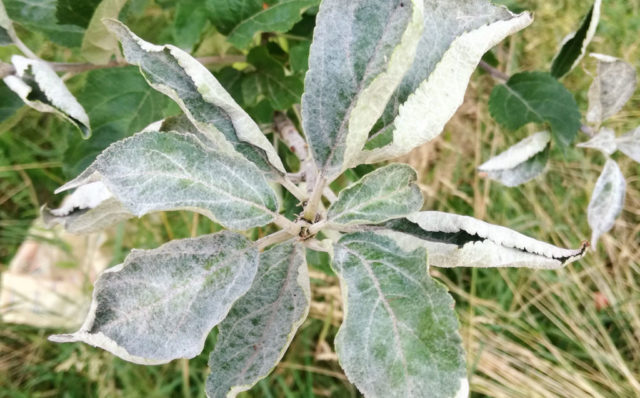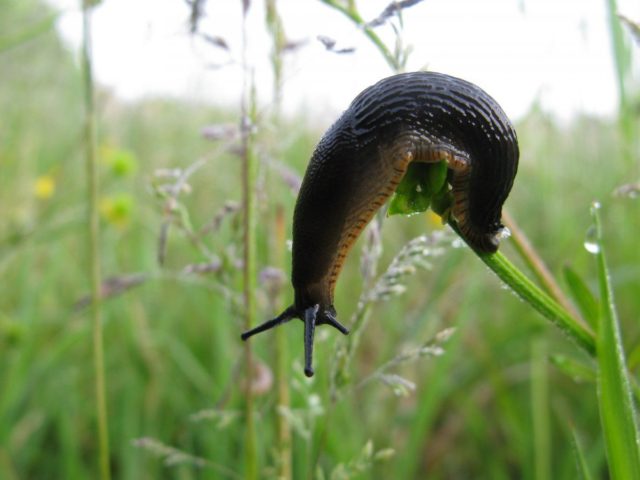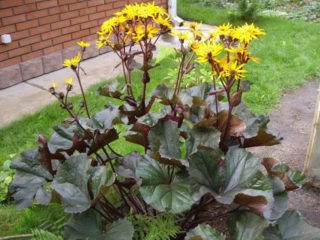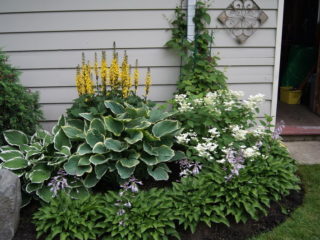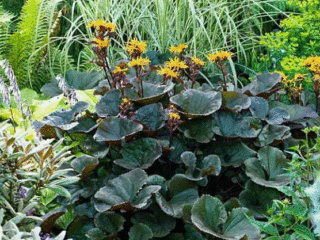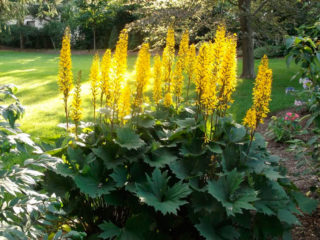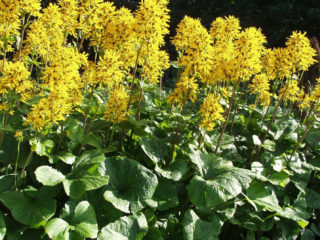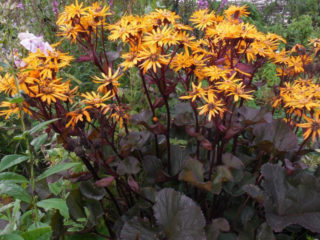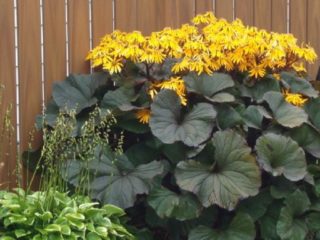Content
Buzulnik Tangut is a lush ornamental plant with large beautiful leaves and panicles of small yellow flowers. Recently, the shade-loving species has been increasingly used in landscape design, displacing the phloxes and peonies familiar to many from garden plots.
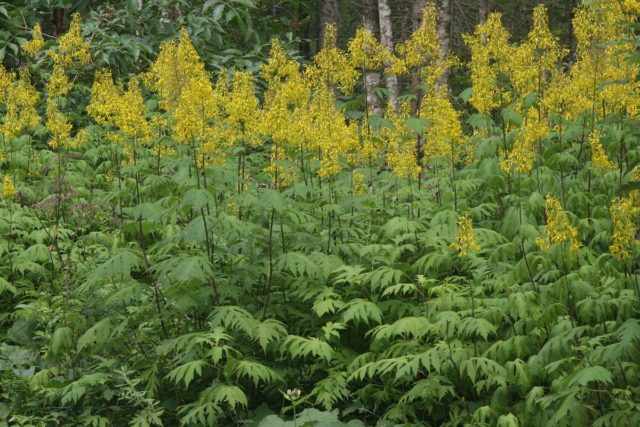
Buzulnik can be found in the wild
Description of the species
Buzulnik Tangut (another name is “ligularia”) is a perennial herbaceous plant of the Asteraceae or Asteraceae family. The scientific name of buzulnik comes from the word “ligula”, which translated from Latin means “tongue” (this is what the marginal inflorescences of the plant look like). China is considered the birthplace of ligularia, but in the wild this flower can be found in other countries of North, Central, Southeast and East Asia.
Tangut buzulnik is an ornamental, flowering plant, the height of which reaches 90-120 cm. Large (about 60 cm in diameter) lacy pinnately dissected leaves, attached to strong long cuttings, form a basal rosette. Green leaves change color in autumn, becoming red-brown.This makes it possible to maintain the decorative appearance of the bush even after the end of the flowering period.
Small tubular and reed yellow flowers are collected in paniculate inflorescences. Peduncles are erect and strong.
The flowering period of Tangut buzulnik begins in June and continues until the end of summer.
The root system consists of individual tubers, which makes it possible to separate it without much effort during transplantation.
The fruit is a seed capsule with a tuft.
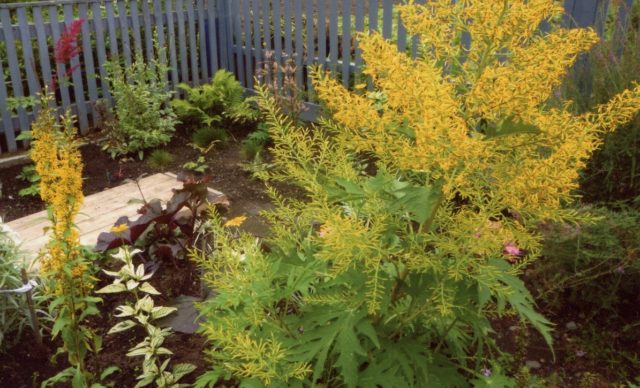
The flowering period lasts 2 months
Application in landscape design
Tangut buzulnik is an excellent option for decorating shady areas of the garden, as well as the banks of artificial and natural reservoirs.
It will look equally good both on private plots and in public parks and squares. Ligularia is used to decorate flower beds and alpine slides; it is planted at the entrance.
The tall flower is used both in single and group plantings. Buzulnik tapeworm can become a bright central spot in mixborders, and group plantings of ligularia form a large flowering bush that can compete with ornamental shrubs.
Shade-loving ornamental deciduous grasses and shrubs - hosta, daylilies, snake knotweed, and lady's mantle - will be suitable neighbors for the tall buzulnik-solitera.
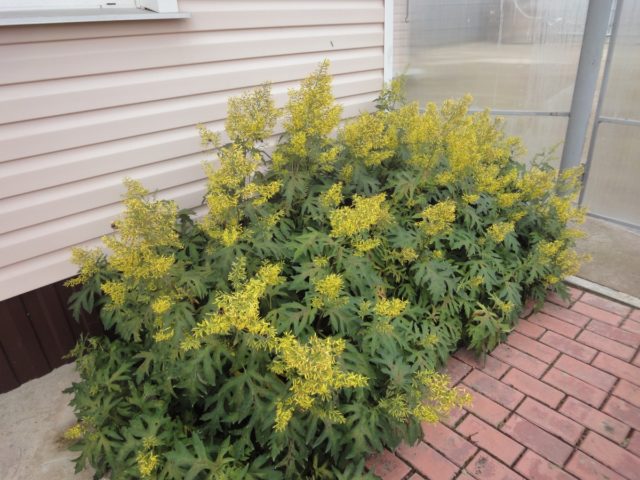
Buzulnik is often planted at the entrance
Features of reproduction
There are 3 methods of propagation: seed, cuttings and dividing the bush.
The most convenient and effective way is to divide the bush. Cuttings and seed cultivation are quite labor-intensive.In addition, Tangut buzulnik, grown from seeds, blooms only in 4-5 years.
Planting and care
Tangut buzulnik is an unpretentious plant that can grow in one place for 15-20 years. Caring for it is also not particularly difficult and includes watering, loosening and fertilizing.
Recommended timing
Tangut buzulnik seeds are sown in open ground in spring or autumn, buried 1 cm into the soil.
Seeds are planted for seedlings in February-March, and seedlings are transferred to open ground in May, when the soil warms up to the desired temperature.
By dividing the bush, ligularia is propagated in early spring at the very beginning of the growing season or in the fall after flowering ends.
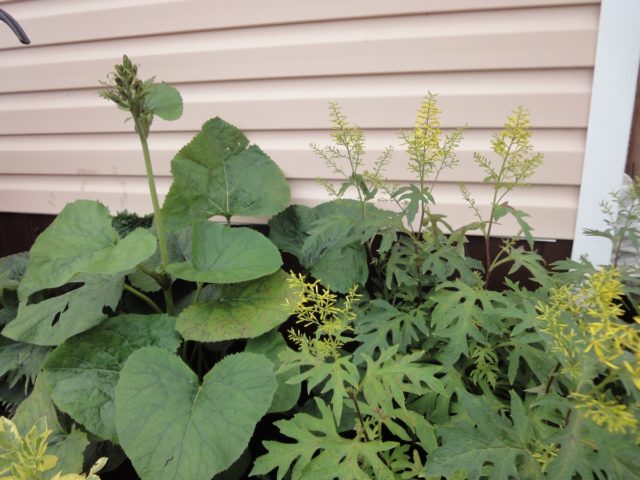
Buzulnik can grow in one place for many years
Site selection and soil preparation
Tangut buzulnik does not like direct sunlight, so for planting it it is better to choose shaded places with fertile soil and close groundwater.
A suitable place for growing can be a shady corner of the garden, as well as the shore of an artificial or natural reservoir.
Landing algorithm
To transplant a buzulnik by dividing a bush:
- dig up the plant and cut it into several sections, each of which must have at least 2 viable buds and 1-2 tubers of the root system;
- to prevent diseases, the cut sites are treated with wood ash or a solution of potassium permanganate;
- make holes with a depth and diameter of about 40 cm;
- fill the holes 2/3 with a nutrient mixture, which includes the top fertile layer of soil, wood ash, organic and mineral fertilizers;
- Place the cuttings in the center of the holes, cover them with soil and water them;
- the soil in the root zone is mulched with sawdust or crushed dry grass without seeds.
The distance between plantings should be at least 1 m.
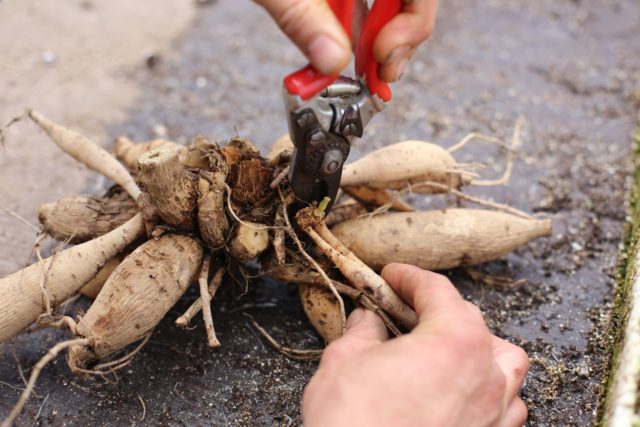
Each division must have viable tubers
Watering and fertilizing schedule
Tangut buzulnik is a moisture-loving crop that requires regular watering. Otherwise, ligularia withers and loses its decorative effect.
Water the plant as the top layer of soil dries. On particularly hot days, sprinkling is carried out.
The buzulnik receives its initial feeding during the process of planting. Subsequently, the flower is fed every year from May to June. As a fertilizer, experts recommend using an infused aqueous solution of cow manure, which is prepared in a ratio of 1:10.
Loosening and mulching
During the entire warm period of the year, it is necessary to remove weeds in the area of the root zone of the flower. The soil is loosened after each watering. If it is covered with mulch, there is no special need for loosening.
Tangut buzulnik does not need pruning. However, if you do not plan to collect seeds, the flower stalks are trimmed to improve the appearance of the bush.

The soil is loosened after each watering
Preparing for winter
Buzulnik is a frost-resistant plant. However, in regions with cold winters, care should be taken to protect against severe frosts. To do this, at the end of autumn, the ground part of the ligularia is cut off, and the soil in the root area is covered with a thick layer of mulch or fallen leaves.
Diseases and pests
Tangut buzulnik is resistant to many diseases. However, sometimes you have to deal with such troubles as:
- Powdery mildew. The disease is identified by a white coating on the leaves. You can cope with powdery mildew by treating the leaves and flowers of ligularia with a solution of 1% colloidal sulfur or a solution of potassium permanganate at the rate of 2.5 g of the substance per 1 bucket of water.
Powdery mildew can be identified by the appearance of a white coating
- Slugs. As a rule, these pests attack in the spring. To ward off unwanted guests, the soil in the area of Tangut buzulnik bushes is sprinkled with granulated superphosphate.
In spring, plantings suffer from slug attacks
Conclusion
Buzulnik Tangut is a perennial flowering plant that, in combination with other shade-loving species, can enliven the most gloomy corners of the garden. And its unpretentiousness and resistance to disease makes it easier to care for ligularia.
